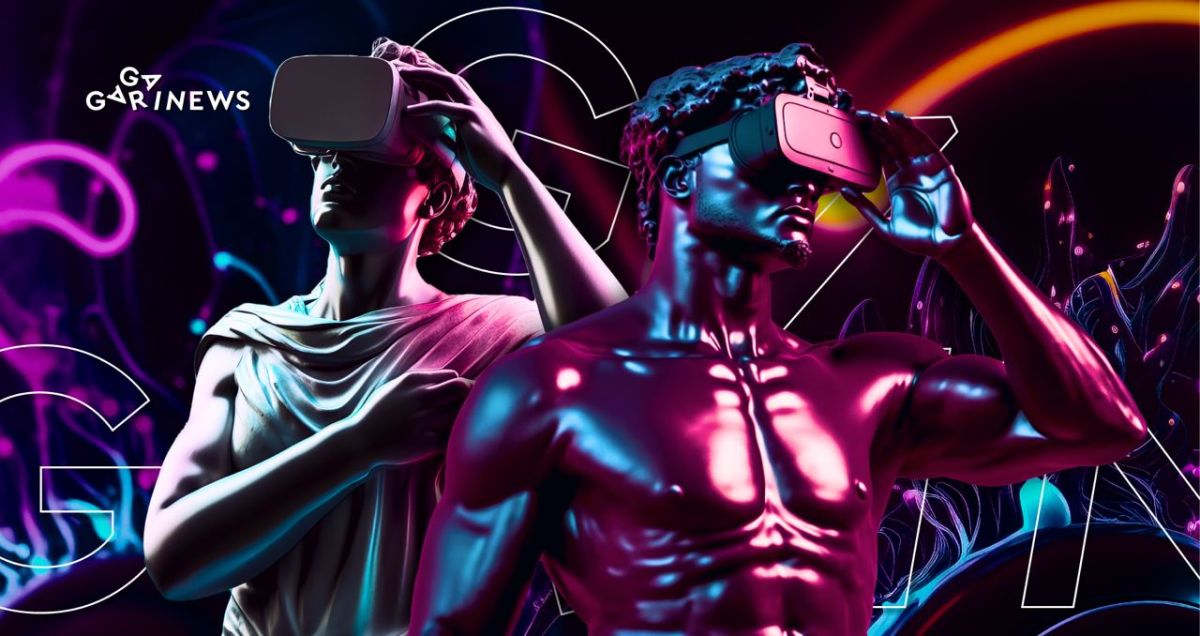Could Virtual Museums Supersede Traditional Exhibitions?

The advent of virtual reality technology has instigated a profound shift in how we engage with art and history by making rare cultural treasures readily accessible to everyone. VR museums provide the unique opportunity to immerse oneself in exhibitions without even stepping out the door.
On this page
In the face of the COVID era, museums have embraced virtual reality as a lifeline, leading to a substantial increase in revenues from virtual exhibitions during 2020-2021. This surge has outpaced earnings from ticket sales for traditional exhibitions, which faced limitations imposed by the pandemic.
Surprisingly, virtual reality exhibitions have remained affordable, debunking initial concerns that audiences would lose interest in physical exhibits once introduced to the virtual realm. In the ongoing battle between traditionalists and innovators, museum and gallery owners who have embraced new technologies to expand their reach have emerged victorious.
To illustrate the current scenario of VR museums and their potential impact on the future of art, we present a list of the most sought-after platforms.
Google Arts & Culture VR
Google Arts & Culture is a widely recognized platform, offering virtual excursions to a myriad of museums. Collaborating with esteemed cultural institutions globally, it delivers vibrant, interactive experiences for art enthusiasts.
However, the app does have a few limitations: a Daydream-supported headset (like the Daydream View) and a Daydream-compatible phone are necessities for museum visits. In addition, the platform tends to have compatibility issues with Android devices.
You can view the app's presentation here.
Museum of Other Realities (MOR)
MOR is a specialized VR museum, offering immersive interactive experiences. It displays a collection of virtual artworks by modern artists. You may not find Degas' or Raphael's paintings here, but the museum abounds with multimedia installations, digital sculptures, and 3D characters that invite interaction. MOR has made a name for itself among aficionados who relish the exploration of digital art frontiers.
While any VR headset can be used to explore the museum, the most immersive experiences, as per reviews, are garnered using Oculus.
You can view the platform's presentation here.
The British Museum VR
The British Museum, one of the most venerable cultural establishments in the world, has stepped into the realm of virtual reality. Through its VR app, users can delve into select galleries and marvel at high-resolution 3D models of celebrated artifacts. Over 60 galleries, including the Egyptian figures gallery and Sainsbury's African artifacts, are accessible for online exploration. Moreover, visitors can saunter through exhibition halls showcasing Durer's paintings and Michelangelo's sculptures.
The app has gained fame due to the museum's flawless reputation and active media promotion. Visitors can enrich their tour with an audio guide, downloadable from a podcast app.
The Tate Modern
London's Tate Modern gallery has joined the VR trend by creating a mesmerizing virtual space that brings to life Modigliani's Parisian workshop from over a century ago. The design of this virtual area was meticulously recreated from the artist's preserved sketches. Through the use of a VR headset, visitors can immerse themselves in the minutiae of the genius' surroundings, exploring the furniture, window view, unfinished artwork, and even the paint blotches on the floor.
You can view this reimagined studio here.
The National Museum of Natural History in Paris
The National Museum of Natural History launched its first VR exhibition back in 2018. Now, a comprehensive virtual customer service area is available on their website, allowing visitors to purchase tickets for online excursions to Paris Zoological Park, Chevrela Arboretum, Museum of Man, and the Grand Evolution Gallery, which remain open for perusal all year round.
These virtual tours have been a massive hit among European school students, serving as fantastic resources for natural science studies.
Ticket prices vary from €5 to €13 for a 30-minute visit.
You can see a glimpse of what these tours entail here.
National Museum of Brazil
In September 2018, a tragedy befell the National Museum of Brazil, an institution with over 200 years of history. A catastrophic fire swept through the museum, obliterating more than 20 million unique artifacts of natural history and anthropology. In the aftermath, the nation's scientists embarked on an ambitious project, resurrecting the lost treasures in a virtual environment using existing video and photographic records. Now, anyone in the world can immerse themselves in these once-lost collections through VR. However, the physical museum no longer stands. Its structures and archives were almost entirely reduced to ashes.
Yet, the virtual manifestation of the museum has emerged as a beacon of resilience in the face of crisis. It stands as an innovative means to safeguard and share these priceless treasures with the world, despite their physical loss.
A tour of the now-vanished museum can be booked here.
The Kremer Museum
The Kremer Museum has taken a remarkable approach to constructing its exhibition. It has established a virtual platform that displays over 70 works from Dutch and Flemish masters. Intriguingly, this museum doesn't physically exist, nor does its collection – all the showcased works are spread across various museums and private collections.
The artworks are accessible exclusively in virtual reality, an environment meticulously designed by the acclaimed architect, Johan van Lierop. To recreate these masterpieces in the virtual realm, each piece was photographed thousands of times to capture every minute detail.
A glimpse of the Kremer Collection can be taken here.
The content on The Coinomist is for informational purposes only and should not be interpreted as financial advice. While we strive to provide accurate and up-to-date information, we do not guarantee the accuracy, completeness, or reliability of any content. Neither we accept liability for any errors or omissions in the information provided or for any financial losses incurred as a result of relying on this information. Actions based on this content are at your own risk. Always do your own research and consult a professional. See our Terms, Privacy Policy, and Disclaimers for more details.


























